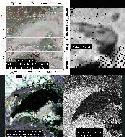 Thermal IR Tb, SSM/I Tb, Visible albedo, SAR image
Thermal IR Tb, SSM/I Tb, Visible albedo, SAR imagePresented here are views of Lake Superior ice in four wavelength regions:
The objective is to combine the information content inherent in the different wavelengths to learn more about the ice and surrounding environment. The scenes were acquired within hours of each other on March 11, 1997.
 Thermal IR Tb, SSM/I Tb, Visible albedo, SAR image
Thermal IR Tb, SSM/I Tb, Visible albedo, SAR imageData Fusion image caption:
The albedo image is based on AVHRR Band 1 (0.58 to 0.68 um), computed using ENVI software. Albedo is defined as the ratio of energy impinging on a surface to the energy reflected from it (at some specified wavelength). Contours are overlain on the image, with image brightness proportional to albedo.
Fresh snow typically has a very high albedo in the visible portion of the spectrum, in the range of 0.90-0.98. Ice typically has lower albedos. The ice here on the north side of the Keweenaw Peninsula has an albedo ranging from 20-50 %, which may seem somewhat low to those familiar with ice. It is particularly low if you consider that in the Great Lakes, snow cover is abundant, and that would tend to elevate the albedo.
The reason the albedo is lower than that expected is because there are leads and thin ice present in the scene at subpixel scales, and their low reflectivity lowers the overall albedo. Inspect the accompanying SAR image. You will detect leads and other low-albedo areas that contribute to the low AVHRR albedo. The difference is a matter of spatial resolution. The SAR pixels are 50 m on a side, while the AVHRR pixels are nominally 1.1 km on a side.
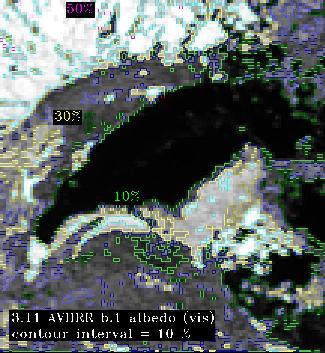 AVHRR Band 1 albedo image
AVHRR Band 1 albedo image
AVHRR band 4 (10.3-11.3 um) is sensitive to emitted radiation in the thermal infrared (TIR) portion of the electromagnetic spectrum. Knowing the emissivity of ice, we can use the TIR Tb to indicate physical (kinetic) temperature. Ice temperature is related to ice thickness, snow cover, melt or flood state and, perhaps, degree of deformation.
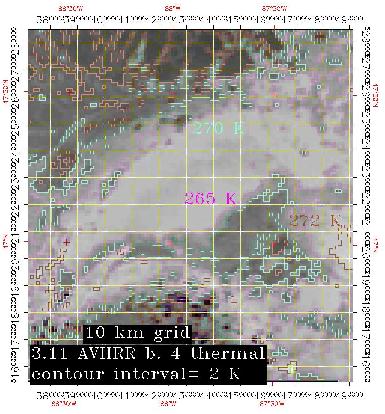 AVHRR Band 4 thermal infrared temperature
AVHRR Band 4 thermal infrared temperature
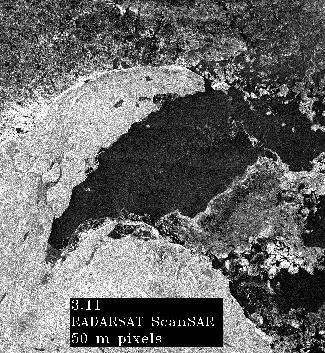 RADARSAT ScanSAR Wide backscatter image
RADARSAT ScanSAR Wide backscatter image
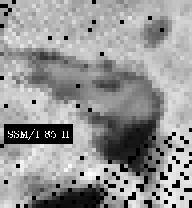 SSM/I 85 H passive microwave image
SSM/I 85 H passive microwave image